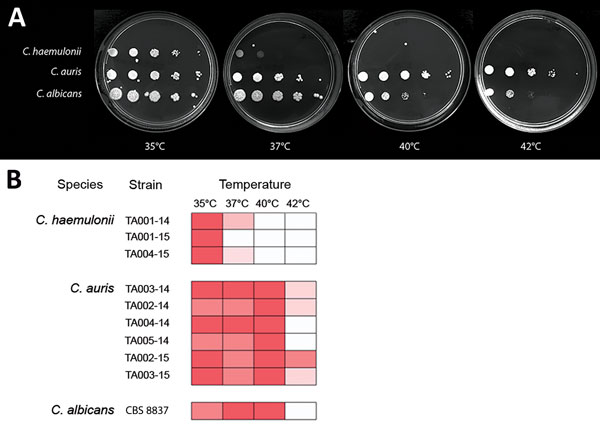Volume 23, Number 2—February 2017
CME ACTIVITY - Research
Multidrug-Resistant Candida haemulonii and C. auris, Tel Aviv, Israel
Figure 3

Figure 3. Differing thermotolerance of Candida auris and C. haemulonii. A) Sabouraud dextrose agar plates showing growth of representative Candida strains after 24 h incubation at 35°C–42°C; B) Thermal growth range of Candida isolates from Tel Aviv, Israel.
Page created: January 12, 2017
Page updated: January 12, 2017
Page reviewed: January 12, 2017
The conclusions, findings, and opinions expressed by authors contributing to this journal do not necessarily reflect the official position of the U.S. Department of Health and Human Services, the Public Health Service, the Centers for Disease Control and Prevention, or the authors' affiliated institutions. Use of trade names is for identification only and does not imply endorsement by any of the groups named above.